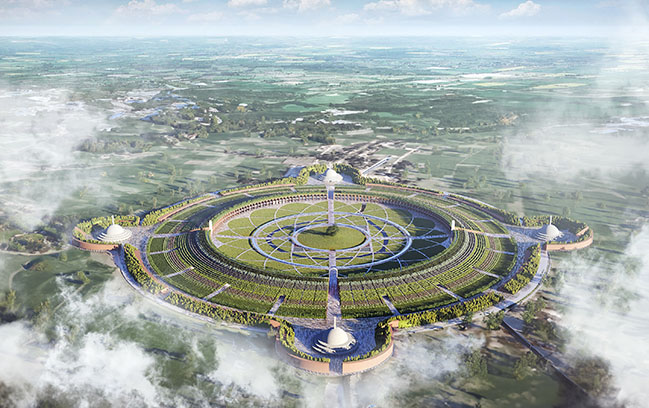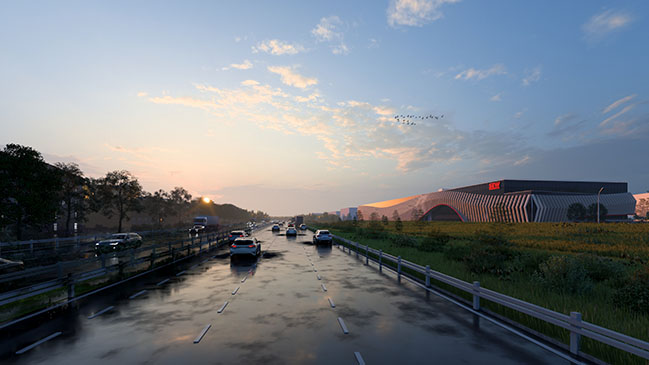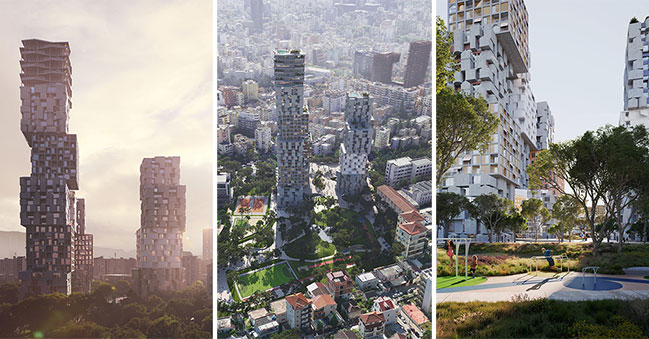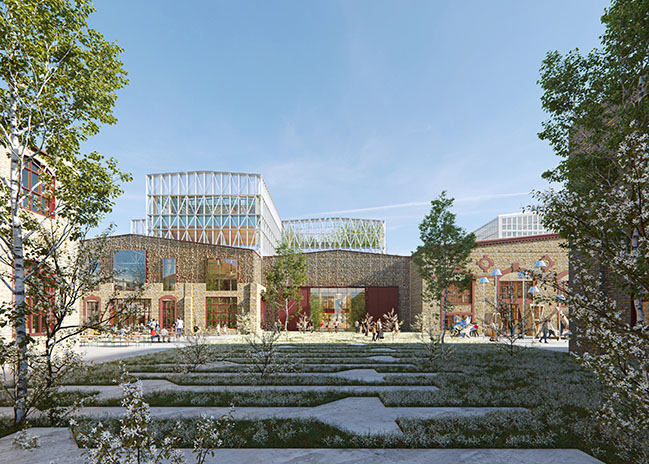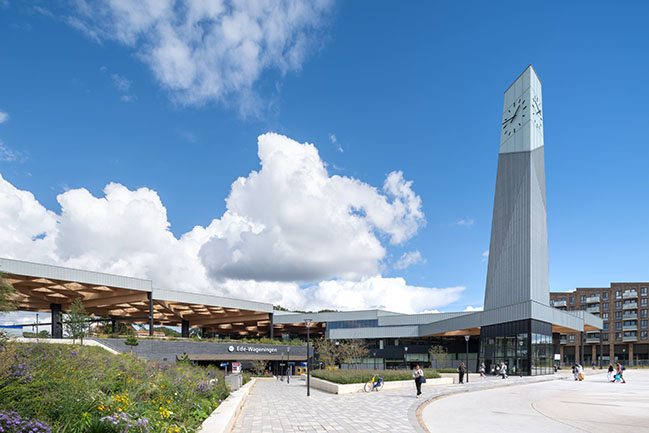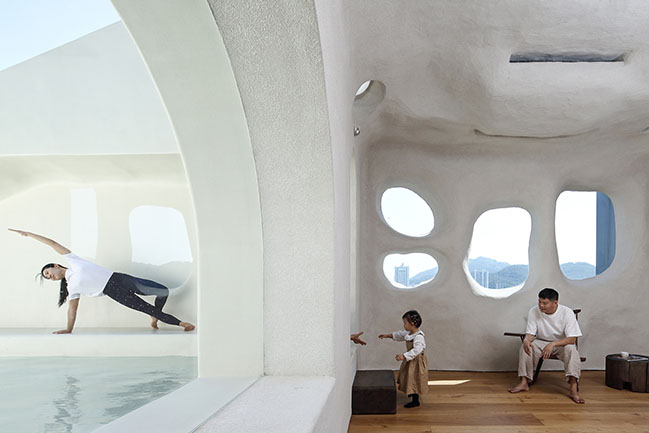10 / 14
2024
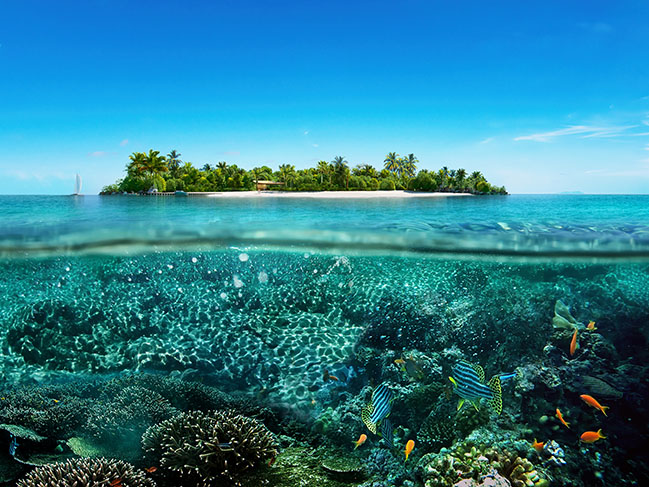
all images © Foster + Partners
> Foster + Partners and Neri Oxman complete the innovative design lab for OXMAN in New York City
> Battersea Roof Gardens and 50 Electric Boulevard by Foster + Partners completed
From the architect: Working closely with the Maldives Fund Management Corporation (MFMC), Foster + Partners has developed a vision masterplan for Gaafaru, an inhabited island of Kaafu Atoll. The project puts forward six key principles to ensure a highly sustainable and resilient future for the island.
Luke Fox, Head of Studio, Foster + Partners, said: “Climate change and the resulting rising sea levels have brought the existential struggles of communities in archipelagos around the world into sharp focus. Future sustainable developments on island habitats – such as Gaafaru – must embrace ideals of resilience and harmony with nature, offering a forward-looking approach that serves the futures of its inhabitants.”
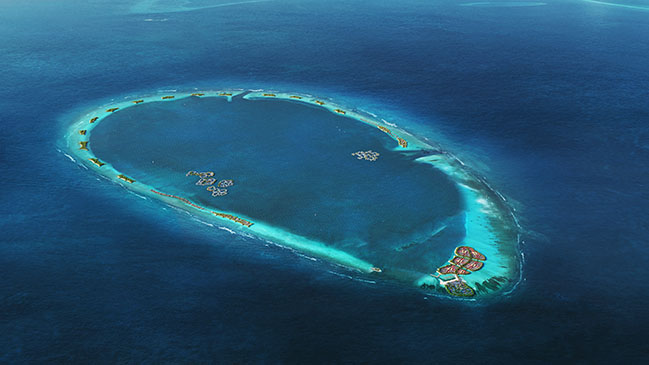
The low-lying archipelago of Gaafaru is suffering greatly from the effects of global climate change. Rising sea levels put the island at severe risk of flooding in the next century, with approximately half of its land in danger. The effects of pollution and rising sea temperatures also threaten its rich biodiversity. Furthermore, social inequalities create disparity between local residents and visitors. The Maldives’ economy is reliant on tourism and has a high dependence on imports for energy, food, and other goods.
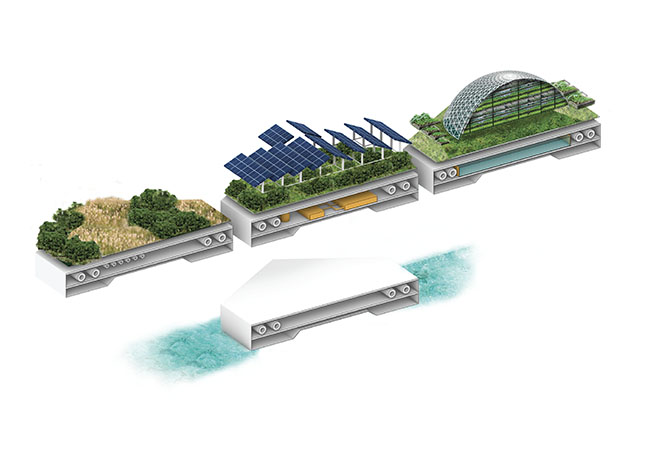
The masterplan has been designed with the practice’s sustainability team and in-house ecologists. It holistically addresses the island’s challenges by:
1. Adapting to rising sea levels and extreme conditions
The masterplan is based on environmental analysis and understanding rising sea levels over the next century. Land will be sustainably reclaimed – using low impact building techniques – and built at a higher level to decrease the risk of flooding for one-hundred years. Around the edge of the masterplan, environmental protection zones with native planting act as a green buffer to provide resiliency against extreme conditions.
2. Minimising damaging dredging and land reclamation practices
Dredging methods have been carefully considered, with strict regulation standards and international best practices being applied. Reclaimed land will be reduced by 45% (from business-as-usual building methods in the Maldives), with the use of piling, floating and berm only reclamation to minimise environmental impact. 70% of reclaimed land will be given over to marine and terrestrial habitats for native planting. Pilot projects could also offer innovate new methods for land reclamation, such as 3D-printed modules.
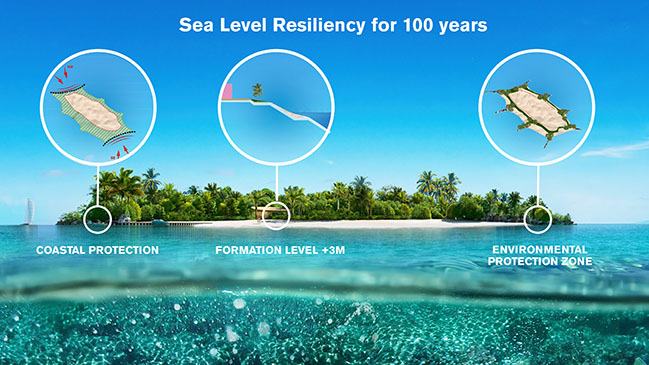
3. Nurturing ecology
The island’s ecology, one of its greatest assets, will be protected through the implementation of Marine Protected Areas. These areas preserve habitats, species and processes that are essential for healthy, functioning marine ecosystems. A marine institute will provide education for visitors and locals, encourage international researchers to visit Gaafaru, and explore new restoration initiatives that benefit the island’s ecology.
4. Enhancing prosperity for all
The masterplan for this integrated tourism project – which consists of private islands and ultra luxury resorts – aims to diversify economic opportunities in the Maldives and leverage Gaafaru’s population growth. New employment opportunities for local people are created through resorts and floating platforms, featuring modular units for energy and local food production.
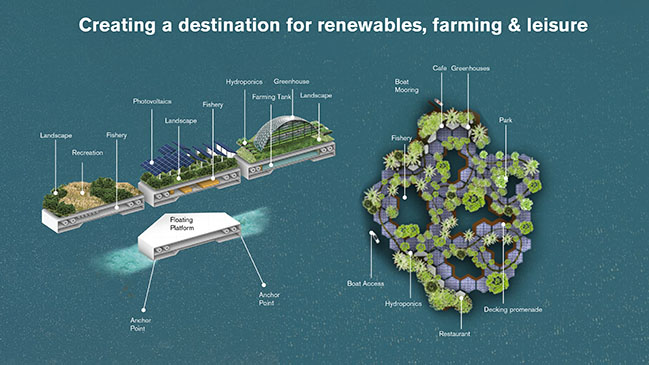
5. Unifying communities
To integrate locals and tourists, the masterplan will provide a mobility network that connects local areas with new resorts. Vibrant new destinations and guesthouses within existing local communities will attract visitors to these areas and provide new employment opportunities for those living there. Recreational parks will be located on the floating platforms, providing space for locals and visitors to relax and socialise together.
6. Establishing net zero energy, water and waste
The masterplan will significantly reduce the island’s reliance on imports. All fruit and vegetables will be produced through local farming, hydroponics and greenhouses on the new floating platforms, which will also provide energy through the use of photovoltaics. Local passive design measures will reduce energy consumption by 30%. Grey and black water will be collected, treated and reused on-site for irrigation, outdoor cleansing and toilet flushing. A circular economy ensures biproducts from the treatment of waste and water are reintegrated across the masterplan.
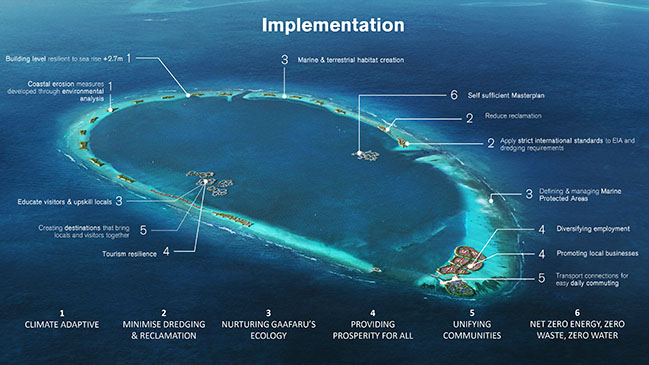
Tony Miki, Partner, Foster + Partners, said: “A significant part of this project has been about identifying and understanding the various challenges – and then working out how to tackle them in the most holistic way possible. Our masterplan seeks to embed resilience into the built fabric for the next one-hundred years, providing ecological protection, social equity, and preserving Maldivian cultural heritage.”
Farah Caswell, Partner, Foster + Partners, added: “Sustainability and resiliency have been embedded across all aspects of the masterplan to ensure Gaafaru’s future for generations to come.”
Foster + Partners presents future-resilient masterplan for Gaafaru island in the Maldives
10 / 14 / 2024 Foster + Partners has developed a vision masterplan for Gaafaru, an inhabited island of Kaafu Atoll. The project puts forward six key principles to ensure a highly sustainable and resilient future for the island...
You might also like:
Recommended post: T.T. Pilates (Xinjing Center) by Wanmu Shazi

